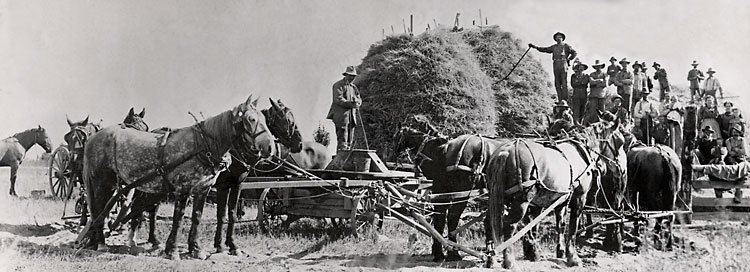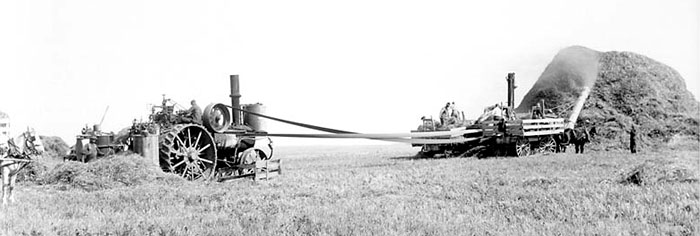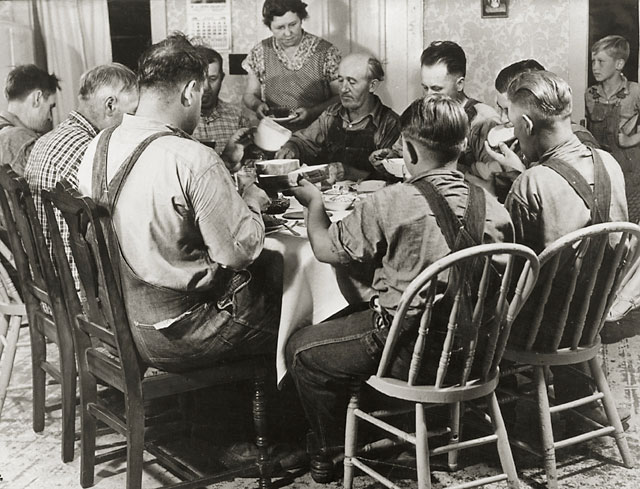 |
||
|
A thresher with more horsepower
|
|||
|
The thresher shown in the picture above, which was found in one of our Morgan/Radford family picture collections, utilizes
a windlass type of power mechanism. The teams of horses pull in a circle to generate power to run the threshing machine.
On smaller farms grain was usually harvested with a binder. The binder cut the grain, bundled it into bundles, and threw it out on the ground. Workers then picked up the bundles and stood them, heads up so they would dry, in what were called "shocks." Shocking grain was the term used for the process of standing the bundles up in round groups so the heads would dry.
Getting the large pulley on the tractor lined up exactly with the large pulley on the thresher so the belt would stay on was an art that required much moving of the tractor. As I boy I watched Henry Olsen back and move for what seemed like hours to get the pulleys aligned. With the advent of the steam tractor with it's powerful belt drive the threshing machine came into it's own. The bundles (shocks) of grain were hauled to the thresher on wagons, which were pulled up alongside the intake on both sides (as shown in this picture). Then the bundles were pitched into the intake.
The thresher was too expensive and used for too short a time each fall to be owned by an individual farmer so the farmer who owned the thresher would move it from farm to farm and the farmers whose farms were scheduled for threshing made up the threshing crew. Wives of the farmers worked together to make lunch for the threshing crew. Lunch was a large meal, usually with meat, potatoes, bread, cooked vegetables and large desserts. In the picture above a threshing crew is being fed lunch at the house where the threshing is being done. |
|||



